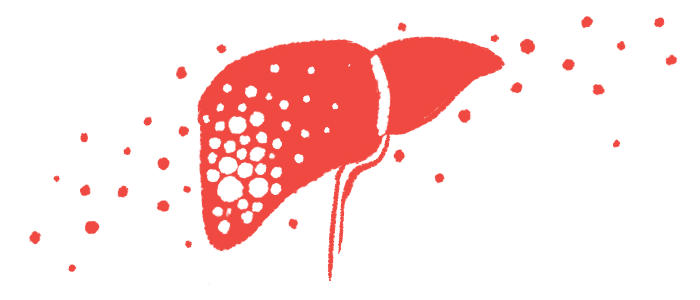Liver disease can increase burden of EPP, patients report in study
Potential complication may increase healthcare needs, impact mental health
Written by |

Liver disease, a potential complication of erythropoietic protoporphyria (EPP), may increase healthcare needs, raise disease burden, and negatively impact mental health, according to a new study by U.S. scientists based on self-reported data from patients.
People with liver disease also said that their EPP had a greater impact on their ability to engage in everyday life activities, such as chores, outdoor exercise, and work, the researchers noted.
“The additional burden experienced by [patients] with liver disease highlights the importance of early and continuing surveillance of liver function among those with EPP,” the researchers wrote, noting that liver disease is “the most serious risk associated” with this porphyria type.
The study, “Self-Reported Liver Disease and the Burden of Erythropoietic Protoporphyria,” was published in the journal JIMD Reports.
Investigating the burden of EPP in patients with liver disease
Like other forms of porphyria, EPP is caused by a disruption in the production of heme, a molecule needed for oxygen transport in the body. EPP specifically is due to mutations in the FECH gene, which lead to a buildup of protoporphyrin, a heme precursor, in different parts of the body.
The primary symptom of EPP is extreme skin sensitivity to light, resulting in uncomfortable or painful sensations. Too much light exposure can lead to phototoxic reactions in which the skin is damaged.
Additionally, liver diseases and other liver abnormalities can occur in people with EPP. However, despite this association, the impact of liver disease on people with EPP remains unclear, the researchers noted.
To learn more, the team conducted a questionnaire-based study involving people with EPP in the U.S. and Canada with and without self-reported liver disease. Liver disease was defined as having high levels of liver enzymes or the presence of liver fibrosis, or scarring.
The participants were recruited through the United Porphyrias Association, a patient advocacy group, to complete the questionnaire. For this analysis, the research team specifically focused on adults, because liver disease was very uncommon among the minors who completed the survey.
The 164 study participants who met the criteria had an average age of 45. Among them, 25 (15.2%) reported having liver disease.
The researchers found that the group of patients with liver disease had a lower overall perceived well-being. Further, these patients reported that EPP more negatively affected their lives.
When asked how they felt their general health was compared with people without EPP, 64% of patients with liver disease rated their health as being “much worse” compared with 35% of those without liver disease, the data showed.
The prevalence of other health conditions, including anemia, gallstones, anxiety, and depression, was also higher among those with self-reported liver disease.
Some early EPP warning signs, which can manifest before a full phototoxic reaction, also differed between the groups. A higher proportion of people with liver disease experienced tingling, feelings of warmth, sensitivity to touch, and sensitivity to heat or cold. Itching and stinging were also slightly more common in people with liver disease.
Researchers highlight concerns about patients’ mental health
EPP also tended to disrupt everyday life more for patients with liver disease. About three-quarters of those with liver disease said their most recent phototoxic reaction had “very much” impacted their ability to do daily activities compared with about half of the people in the other group.
People with liver disease also reported more difficulty generally completing chores and exercising outdoors. Those with liver disease who were employed missed a mean of 10.9 work hours in the past month — an amount more than three times higher than the group without liver disease, who averaged 3.6 hours.
The number of doctor and emergency room (ER) visits also was higher for patients with self-reported liver disease.
“Individuals with liver disease … had more EPP-related physician visits, ER visits, and hospitalizations in the previous 12 months than their counterparts without liver disease,” the researchers wrote.
Negative emotions associated with EPP are ubiquitous among those with liver disease. … Those who develop liver disease should be evaluated to ensure they receive the necessary psychosocial support.
The researchers were not able to confirm self-reports of liver disease or assess if the disease was directly related to EPP. However, the team concluded that the combined impact of symptoms, difficulty with daily activities, healthcare visits, and other diseases increased the burden of EPP for people with liver disease and warranted special care.
In particular, the scientists highlighted concerns about mental health in the group with liver disease.
“Negative emotions associated with EPP are ubiquitous among those with liver disease: 100% reported feeling both isolated and frustrated, and over 90% reported being anxious and lonely (all higher percentages than among those without liver disease),” the team wrote.
Specifically, 88% of those with liver disease reported feeling depressed or sad compared with 73% of those without the co-occurring condition. Similar findings were seen for feeling anxious (92% vs. 78%), isolated (100% vs. 80%), frustrated (100% vs. 89%), and lonely (96% vs. 72%).
Given these findings, “those who develop liver disease should be evaluated to ensure they receive the necessary psychosocial support,” the researchers wrote.







